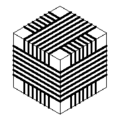Difference between revisions of "2013 Summer Project Week:Open source electromagnetic trackers using OpenIGTLink"
| (16 intermediate revisions by 2 users not shown) | |||
| Line 2: | Line 2: | ||
<gallery> | <gallery> | ||
| + | Image:PW-MIT2013.png|[[2013_Summer_Project_Week#Projects|Projects List]] | ||
Image:Dry0030.png|Stylized image of three orthogonal coils used in 6-DOF electromagnetic tracker sensor | Image:Dry0030.png|Stylized image of three orthogonal coils used in 6-DOF electromagnetic tracker sensor | ||
| − | Image:Dry_elphel_model_1_rcvr_coils.jpg|Handmade assembly of three solenoidal coils; each solenoid is 11 millimeters long | + | Image:Dry_elphel_model_1_rcvr_coils.jpg|Handmade assembly of three commercial solenoidal coils; each solenoid is 11 millimeters long |
| + | Image:Dry0432_1_1_screenshot2013-06-20.png|Screenshot of -10log10(GOF) in Slicer 3 | ||
</gallery> | </gallery> | ||
==Key Investigators== | ==Key Investigators== | ||
* Retired: Peter Traneus Anderson | * Retired: Peter Traneus Anderson | ||
| − | * | + | * BWH: Tina Kapur, Sonia Pujol |
<div style="margin: 20px;"> | <div style="margin: 20px;"> | ||
| Line 15: | Line 17: | ||
<h3>Objectives</h3> | <h3>Objectives</h3> | ||
| − | + | The primary goal of this open-source electromagnetic tracker project is to teach and develop open-source electromagnetic trackers, to enable extending performance in directions that existing proprietary trackers do not address. | |
| − | + | The physics of electromagnetic trackers only just works. Tracker designers are continually struggling to get enough signal/noise from a small-enough sensor at a large-enough distance for a particular application. Magnetic-field distortion adds to the challenges. | |
| + | |||
| + | Low-cost high-speed floating-point computation enables use of compute-intensive modeling and tracking algorithms which give improved accuracy. | ||
| + | |||
| + | </div> | ||
| + | |||
| + | <div style="width: 27%; float: left; padding-right: 3%;"> | ||
| + | |||
| + | <h3>Approach, Plan</h3> | ||
| + | |||
| + | Pete expects to bring last year's hand-built tracker again this year. Pete is partway through developing a USB-based tracker printed-circuit board set, to be demonstrated next year. | ||
| + | |||
| + | Pete's plan for the project week, is to use Slicer to visualize tracker errors versus position. | ||
| + | |||
| + | </div> | ||
| + | |||
| + | <div style="width: 40%; float: left;"> | ||
| − | + | <h3>Progress</h3> | |
| + | |||
| + | Pete successfully used his tracker simulator to image the logarithm of goodness-of-fit, -10log10(GOF), into a NRRD file, and imported that file into Slicer 3. Example image is above. | ||
| + | |||
| + | Pete's laptop computer at Summer Project Week has 32-bit Ubuntu, so 64-bit Slicer 4 won't run. Pete is running Slicer 4 on his desktop computer using 64-bit Slackware. | ||
| + | |||
| + | Next: Figure out meanings of the images. | ||
| + | |||
| + | </div> | ||
| + | </div> | ||
| + | |||
| + | <div style="width: 97%; float: left;"> | ||
| + | |||
| + | ==Delivery Mechanism== | ||
| + | |||
| + | ==References== | ||
| − | + | Pete's published work to date is on | |
| + | [[Open Source Electromagnetic Trackers|Open Source Electromagnetic Trackers]] | ||
| + | and on [[http://home.comcast.net/~traneus http://home.comcast.net/~traneus]]. | ||
| − | + | </div> | |
Latest revision as of 13:54, 21 June 2013
Home < 2013 Summer Project Week:Open source electromagnetic trackers using OpenIGTLink
Key Investigators
- Retired: Peter Traneus Anderson
- BWH: Tina Kapur, Sonia Pujol
Objectives
The primary goal of this open-source electromagnetic tracker project is to teach and develop open-source electromagnetic trackers, to enable extending performance in directions that existing proprietary trackers do not address.
The physics of electromagnetic trackers only just works. Tracker designers are continually struggling to get enough signal/noise from a small-enough sensor at a large-enough distance for a particular application. Magnetic-field distortion adds to the challenges.
Low-cost high-speed floating-point computation enables use of compute-intensive modeling and tracking algorithms which give improved accuracy.
Approach, Plan
Pete expects to bring last year's hand-built tracker again this year. Pete is partway through developing a USB-based tracker printed-circuit board set, to be demonstrated next year.
Pete's plan for the project week, is to use Slicer to visualize tracker errors versus position.
Progress
Pete successfully used his tracker simulator to image the logarithm of goodness-of-fit, -10log10(GOF), into a NRRD file, and imported that file into Slicer 3. Example image is above.
Pete's laptop computer at Summer Project Week has 32-bit Ubuntu, so 64-bit Slicer 4 won't run. Pete is running Slicer 4 on his desktop computer using 64-bit Slackware.
Next: Figure out meanings of the images.
Delivery Mechanism
References
Pete's published work to date is on Open Source Electromagnetic Trackers and on [http://home.comcast.net/~traneus].



